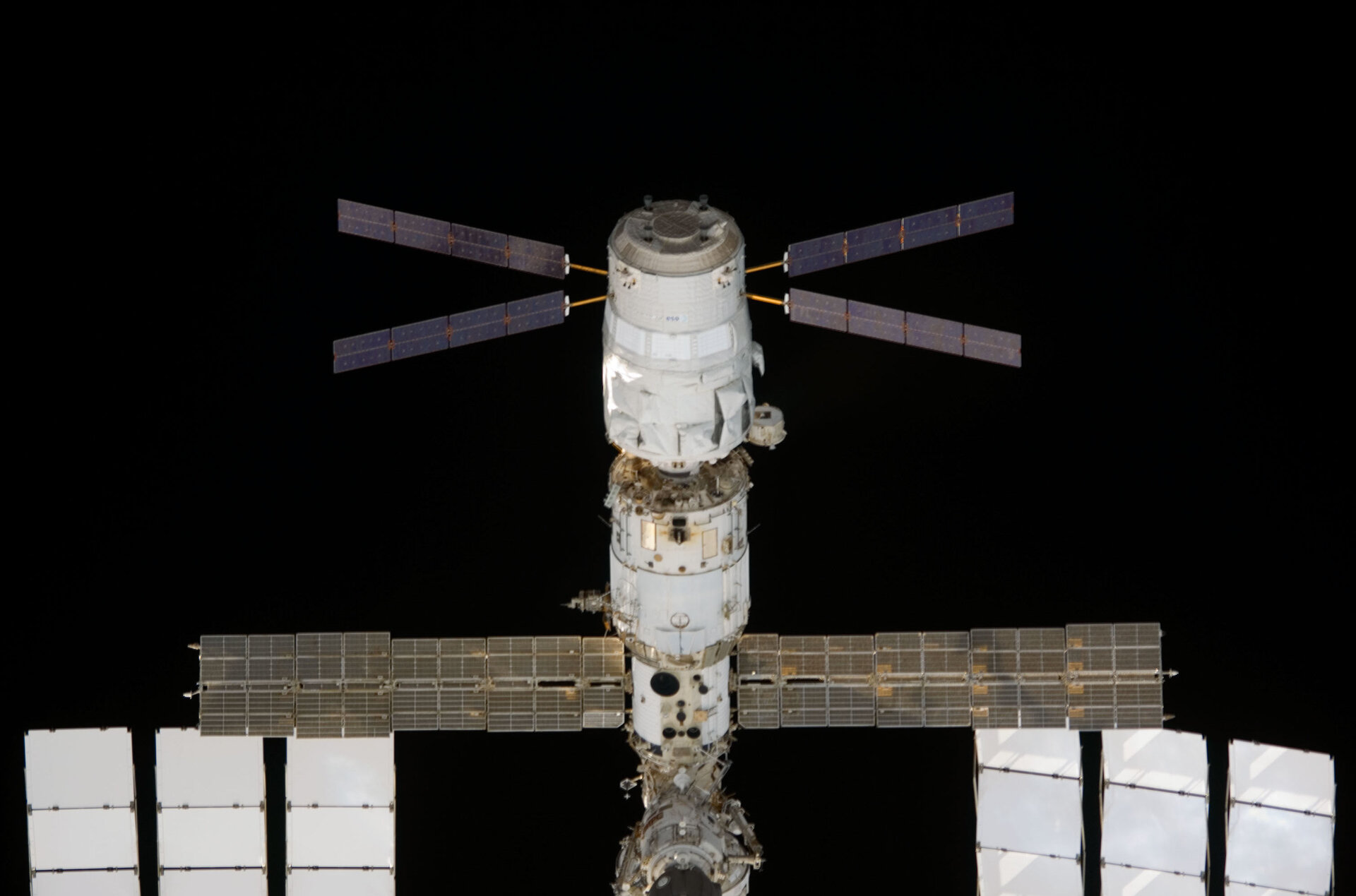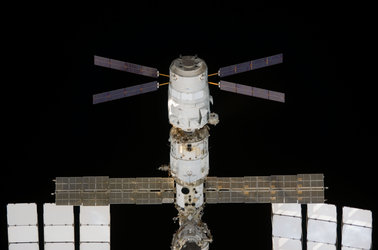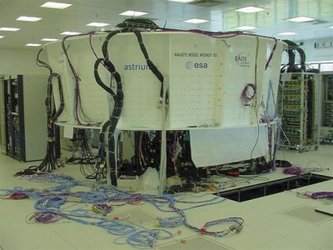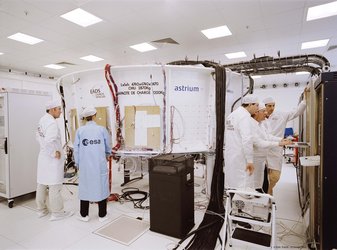ISS prepares for ATV arrival with another spacewalk
In preparation for the arrival of the first European-built Automated Transfer Vehicle (ATV), the ISS supply vehicle due for launch next year, the ISS Expedition 9 Crew installed important hardware during an extra vehicular activity (EVA) on Tuesday 3 August.
During the 4½-hour spacewalk, ISS commander Gennady Padalka and ISS Flight Engineer Mike Fincke removed old laser retroreflectors and installed new ones together with a videometer target assembly. These pieces of hardware play a crucial role in how the ATV will automatically rendezvous and dock with the ISS.
The EVA, which left the ISS unmanned, started at 08:58 (CET) when the Crew left the Station from the Pirs docking module in their Orlan spacesuits and moved their way to the back end of the Russian Zvezda Service Module. After replacing elements of Russian material science experiments (SKK and Kromka) they began the planned tasks associated with the ATV. The old retroreflectors, which were removed, had been in place on Zvezda since its launch to the ISS in July 2000. These will come back to Earth for materials analysis.
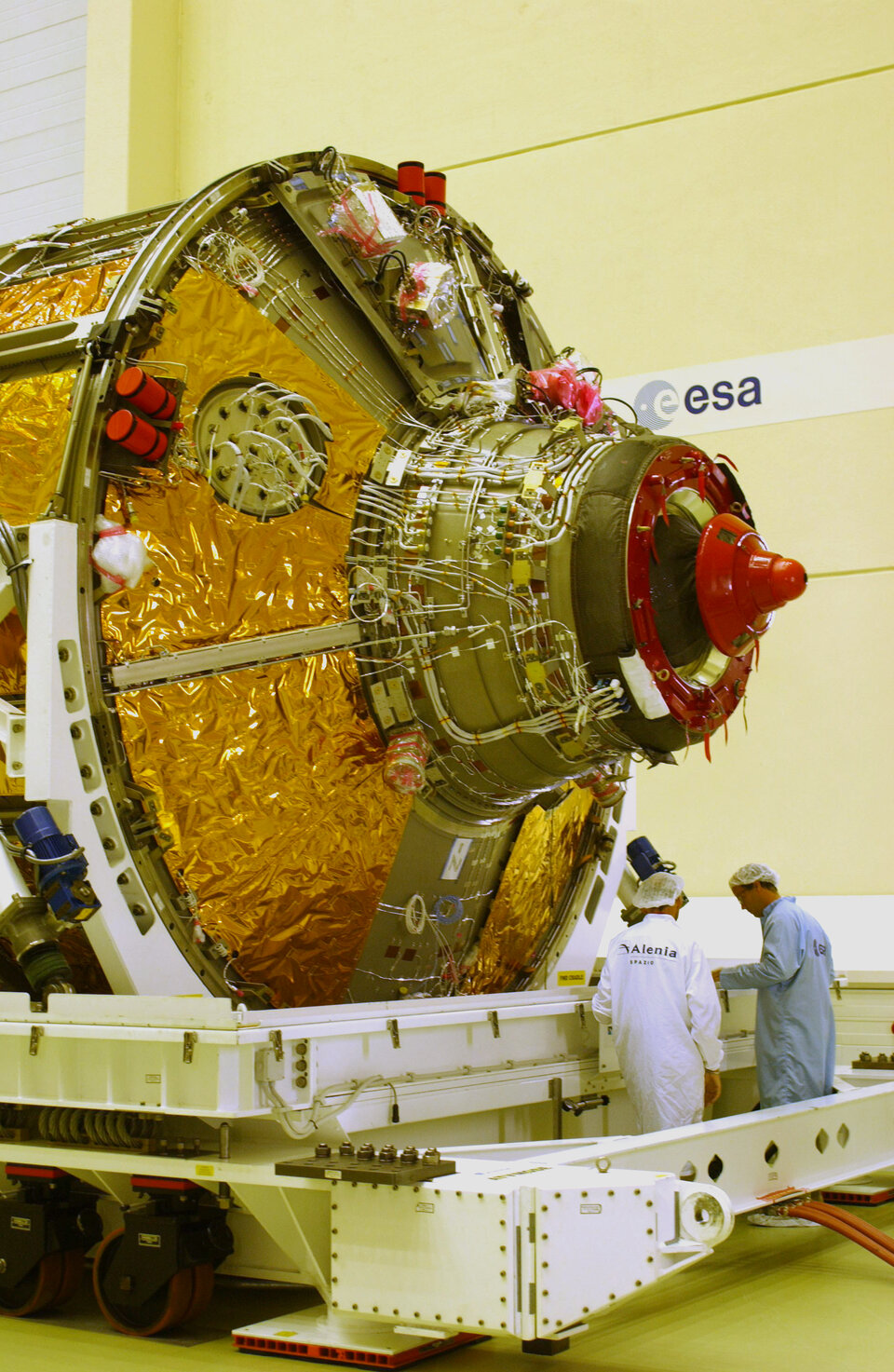
The new retroreflectors and the videometer target assembly (which is also made up of retroreflectors) will play their role in the ATV’s rendezvous and docking procedures. A laser beam source originating from the ATV will be reflected by these retroreflectors and analysed by the videometer on the ATV. The videometer is the first automatic optical operational system ever used for spacecraft navigation and will ensure very precise automatic rendezvous operations between Jules Verne, the first Automated Transfer Vehicle, and the ISS while they are circling the Earth at 28 000 km/h.
Following the tasks associated with ATV, which also included installation of two antennas, the ISS crew retrieved another Russian materials experiment (Platan-M) and returned inside the Station, finishing all planned actions well ahead of schedule. The EVA officially ended at 13:28 (CET) with closure of the hatch on the Pirs docking module.
This was the third spacewalk carried out by the Expedition 9 Crew since being stationed on the ISS since April 2004. There is one further EVA scheduled before their return to Earth, which will also include installation of radio equipment relating to the ATV.
When the ATV comes into service next year it will act as a supply ship for the International Space Station, carrying up to nine tonnes of provisions, scientific payloads and propellant. The ATV will further be used to reboost the ISS to a higher orbiting altitude and remove waste and material that is no longer needed from the Station at the end of its mission when it leaves the Station and takes a planned self-destructive journey into Earth’s atmosphere.
The first ATV called Jules Verne is currently at ESA's test centre in Noordwijk, The Netherlands, where it is undergoing the final test campaign before being shipped to the European launch site at Kourou in French Guiana for its launch in 2007 on an Ariane 5 launcher.


